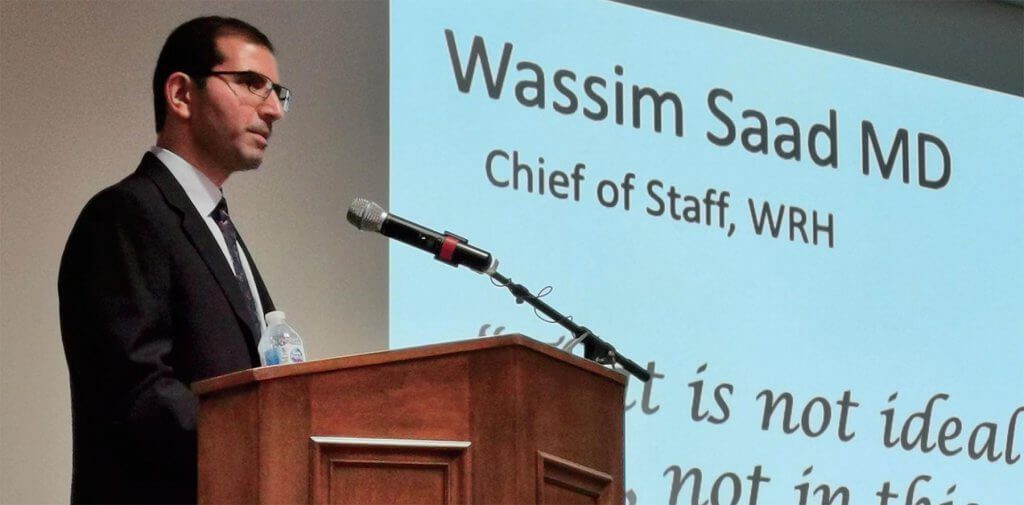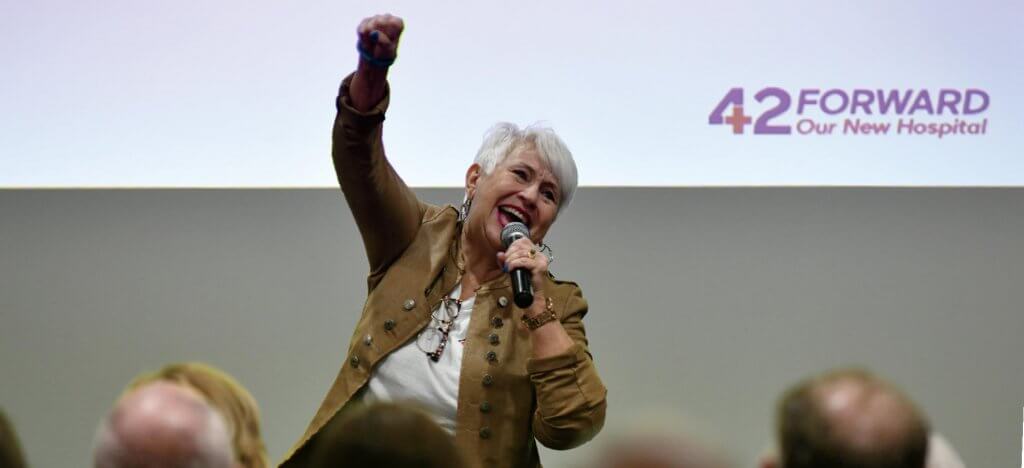By Jennifer O’Brien and Marty Beneteau
Seven years into the campaign for a new hospital in Windsor-Essex, it’s time for a reality check: the project is on life support.
Caught up in a rancorous legal fight over its location and politically outgunned at Queen’s Park, the $2 billion Windsor-Essex Hospitals System proposal now finds itself at the bottom of the Ontario government pecking order, staring up at a sea of Tory blue competition.
Rival hospital projects – many in ridings boasting Progressive Conservative MPPs and cabinet ministers – now rank ahead of Windsor Regional Hospital on the province’s timetable for hospital construction. Some leapfrogged it after Doug Ford’s Tories swept to power in June 2018 and the Windsor area elected three New Democrats.
Once in the top six, Windsor Regional is listed last among hospital projects on the latest Infrastructure Ontario market update, based on the date it is expected to receive final approval – after 2024.
That means that while patients and hospital staff here deal with two aging campuses unable to adapt cutting-edge technology, other Ontarians can look forward to construction starting on their high-tech health hubs as early as 2022.
Consider a redevelopment proposal by the Ottawa Hospital. Estimated at $2 billion, like Windsor Regional’s, it was nowhere to be seen on the 2017 Infrastructure Ontario market update. On that update, Windsor’s project was scheduled to start its formal search for construction contractors in 2021. Now, on the most recent update, issued in September, Ottawa is slated to start that same search in 2022 and start construction as early as 2023, while Windsor Regional’s request for proposals and projected financial close are both “greater than five years” away.
The Ottawa region is home to four Ontario cabinet ministers.
“They started their capital planning project after we did, and recently they just moved ahead of us,” Dr. Wassim Saad, Windsor Regional’s chief of staff, told an October rally of 42 Forward, a group in favour of the proposed County Road 42 site. “Are people in Ottawa more important than the people in Windsor-Essex? No, they are not.”

Speaking to former patients and families who shared heartfelt stories about their hospital experiences, Saad described how deficiencies at Windsor Regional’s Ouellette and Met campuses are burning out staff and hurting talent recruitment.
“For our patients, for our community, for clinicians … who want to care for you and your loved one in the right place at the time you need it, we need to move forward.”
Why is the hospital stalled? Has the nearly five-year dispute over its location given Queen’s Park an excuse to idle it, as Mayor Drew Dilkens, County County Warden Gary McNamara and others suspect?
The debate goes back to 2015. When a site-selection committee recommended a farm field near Windsor Airport, it sparked a headline-grabbing battle that touched social themes ranging from the environment to accessibility and urban sprawl.
The chosen location, touted as a geographical compromise to provide equal access for nearly 400,000 city and county residents, drew outrage from some Windsorites concerned about losing health care to the suburbs. The most vocal was CAMPP (Citizens for an Accountable MegaHospital Planning Process), which posted lawn signs imploring the government to “re-think the mega-hospital.” CAMPP said the proposed site would make care less accessible for Windsorites.
After Windsor council approved a motion to rezone the site to make it possible to build a hospital there, CAMPP formally appealed that decision. The appeal led to a three-day hearing before the province’s Local Planning Appeal Tribunal (LPAT) in October. Adjudicator Scott Tousaw reserved judgment and a ruling is expected by January 2020, nearing the eighth anniversary of the hospital campaign.
Dilkens poses an important question: Why would the province approve a $2-billion expenditure which is at risk of going back to the drawing board if zoning is killed? The province would include zoning among what it calls “early planning work” that puts the onus on the lead agency – in this case WRH – to resolve local issues before the project moves forward.
A dismissal of the appeal could shoot Windsor up the province’s construction list. But not necessarily. Either side can appeal to Divisional Court, according to the LPAT Act, and the site opponents are well funded. A GoFundMe campaign organized by CAMPP spokesperson Philippa Von Ziegenweidt had exceeded $80,000 of its $100,000 goal in November.
“We expect a long fight,” CAMPP, whose appeal is supported by three business improvement areas, says on its website.
If CAMPP wins, and the city does not appeal, it’s anyone’s guess how long selecting a new site would take.
CAMPP is adept at garnering media attention and its social media execution is prolific and pointed. The group has churned out more than 5,600 posts since joining Twitter in 2014. CAMPP had 667 Twitter followers in November and 230 donors to the GoFundMe campaign. By comparison, 42 Forward had six Twitter followers and six posts.
In a Sept. 15 post, CAMPP defended itself against critics who said it is putting the hospital in peril, saying, “Stop the fearmongering (sic) about losing this investment. Stop vilifying vocal, deeply concerned residents.”
In an interview, Von Ziegenweidt said her organization supports a new single-site hospital located “where people live today.”
“We don’t think it’s being held up at all by discussion over the location. People think it’s a matter of getting shovels in the ground. Everybody assumes (the delay) is about the location, but nobody has ever said that. It could be for any number of reasons.
“They still need to decide on all sorts of functional matters before they can proceed.”
She said hospital supporters should welcome the “independent oversight process” occurring with the LPAT appeal. “For such a major expense that we are incurring, I don’t see why anybody wouldn’t want to have those checks and balances before proceeding. I think that’s a very important step in the process that we should all be welcoming.”
Dilkens draws a direct line between the site selection dispute and the hospital’s lack of progress.
“The appeal process does give the province a reason to delay,” he said. “The province legitimately has a way to say we like your proposal, but why will we give you $9 million today?” The latter is in reference to the province announcing $9 million last summer to push Ottawa to the next stage.
McNamara, his county counterpart, noted that all eight municipalities, including Windsor, have approved the location. “We don’t want to be in a position to give the provincial government any type of opportunity to deny a much-needed acute care hospital that is desperately needed in our region,” said McNamara, mayor of Tecumseh. “It is unfortunate that there are squabbles about the location. What we are hearing (in the community) is, ‘Let’s move on, stop the rhetoric. It’s been done fairly.’”
The DRIVE made repeated requests to interview Ontario’s Minister of Health Christine Elliott. She did not respond. Interview requests also were submitted to Premier Doug Ford and Infrastructure Minister Laurie Scott, without success. A health ministry spokesperson responded to a series of questions about the apparent change in direction on Windsor Regional’s plans for a new hospital. Asked why Windsor’s scheduled start was pushed back to more than five years away, the spokesperson, Mark Nesbitt, described the project as “still in the early stages of planning,” and said “it’s important to get this early planning right.”
“Many patients and families across the province, including Windsor, are receivincare in aging hospitals that no longer meet modern health-care standards,” said Nesbitt.
He said “early capital planning work” to “determine the programs and services to be delivered” is “not being impacted” by deliberations over the site.
Could the Windsor area’s lack of provincial representation in an austerity-minded government impact the hospital’s fate? Dilkens and others think so.
“Everyone here understands that we don’t have a voice around the government table,” said Dilkens. “Trying to pursue a budget item of $2 billion is a challenge in the best of times.”
The Ford government has been looking for cost efficiencies in its attack on so-called hallway health care. In Grimsby, reports that his hospital would lose key services such as obstetrics, surgery and endoscopy caused West Lincoln Memorial Hospital’s chief of staff to resign. One month later, Ford visited Grimsby, represented by Tory MPP Sam Oosterhoff, with chequebook in hand.
He announced “shovels in the ground by 2022” for a new hospital and pledged an immediate $8.5 million for emergency upgrades.
Seven of the 12 hospital projects listed ahead of Windsor on the 2019 Infrastructure Ontario report have strong PC representation, particularly Ottawa and Queensway Health Centre in Etobicoke, which is adjacent to the premier’s riding. Tourism, Culture and Sport Minister Lisa McLeod has been vocal in her support of the Ottawa project near her Nepean riding, telling the Ottawa Citizen in December 2018, “We are still on track and it is a priority for me and my government. We need a new hospital.”
On the 2017 market update, Windsor Regional was included on a list of eight Infrastructure Ontario projects expected to start procuring vendors by 2021.
Two of those projects – Queensway Health Centre in Etobicoke and Niagara Falls Hospital – once in line with Windsor Regional, are now slated for “financial close” in 2022. That means the province expects financing to be in place to design, build, finance and maintain those facilities, before Windsor Regional even issues its first request for proposals. The 12 projects listed ahead of Windsor would cost more than $10 billion.
“It appears Windsor is being left behind,” said Lisa Gretzky, New Democrat MPP for Windsor West. “Pushing this off with a ‘greater than five years’ is not acceptable for our community. We waited long enough. We’ve done our fair share and we need the government to step up and honour its commitments.”
The province’s hallway health care initiative places an emphasis on rapidly growing communities. Gretzky said that while slower population growth in Windsor-Essex could be a factor, that doesn’t negate the need. “We have aging infrastructure, we need the investment in infrastructure, and people in this community deserve it. They pay taxes like everyone else, and we are seeing investments to other communities. It is our turn.”
Gretzky recalled the chilly, sun-kissed day in December 2017 when then health minister Eric Hoskins stood before a packed atrium at the Ouellette campus and announced Windsor Regional was moving to Stage 2 and an unspecified infusion of government cash. “The problem is the Liberal government never forwarded the funding. They made the announcement and it sat.”
Six months later, the Liberals lost to a Conservative machine pledging to reduce spending by four percent. Provincial funding stopped at Stage 1b – $6.8 million, or less than one-quarter of what local taxpayers have contributed so far through municipal levies.
The vast majority of our region and elected officials and health care providers all agree the location issue has been settled. As an elected official, my role was to allow that process to unfold without politicizing it and I think that was the same tact all elected officials took at every level and when you look at the location, it’s a compromise location. We have to realize it is a regional hospital and not everyone is going to be happy with its location.”
MPP Taras Natyshak, NDP – Essex
